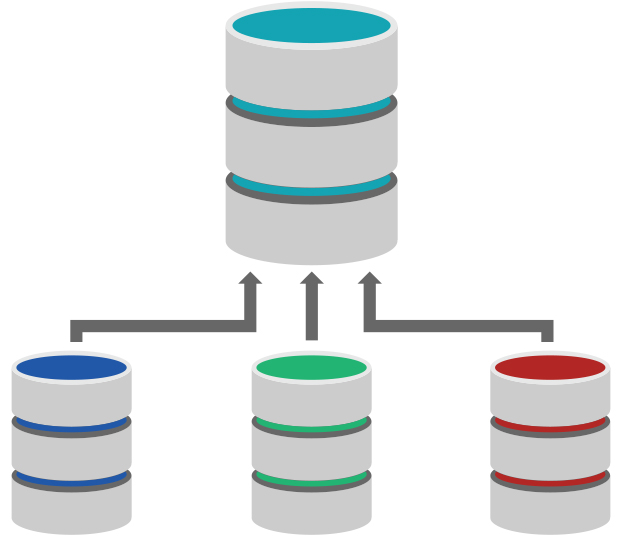Data in Disparate Servers? 5 Steps to Consolidate Your Data
Organization is a core trait of any successful business. Knowing where things are, how to access them, and keeping a system of order are all important — especially when it comes to data management.

It’s common for companies to store data on both cloud and internal servers. Unfortunately, even if data is well-maintained, having two or more siloed record systems can pose all sorts of logistical challenges for accessing that data. For example, it’s like trying to read a book with chapters spread out over different copies, including digital versions — it’s just easier if everything is all in one place.
The problem with disparate data
Accessing data from multiple areas can cause complications in daily business operations. Using antiquated data from one place to make informed decisions when relevant data is located elsewhere, for example, is a prime concern. The logical thing is to consolidate everything on a single server to
- eliminate information silos;
- centralize data management;
- reduce application, services, and server costs; and
- simplify data infrastructure.
Having a single enterprise system for data management means streamlining one of the most prolific and important aspects of your business: the insights used to power your operations.

Types of data consolidation practices
You can approach data consolidation through a variety of different tactics and tools. Virtual Machine (VM) deployment and Schema Consolidation are two of the most common, each with pros and cons to govern them.
- VMs usually run on a single physical server, reducing overall server footprint and increasing overall utilization. This consolidation option falls short is in its, well, consolidated nature — anything affecting a server affects all VMs tied to it.
- Schema consolidation is more challenging to implement than VMs, however, it can be hugely beneficial for linking standalone databases into a single, searchable structure. It’s harder to manage, but more robust in its data consolidation.
Tools like Oracle Database 12c expedite the data restructuring process, offering the same benefits of schema consolidation with the simplicity of VMs — the best of both worlds for enterprise data managers.

How to make the move towards consolidation
No matter the methodology used to consolidate data, the process is sure to be an arduous one. To ensure it goes smoothly, businesses should follow these few important steps:
- Perform a business impact analysis. What are you looking for in terms of data management and accessibility? Identify your current data management system challenges and how consolidation may resolve those issues.
- Determine the candidate databases and group them. Group your data into High Availability (HA) tiers to ensure easy access and mirrored backup to the most important data for your operations.
- Reduce or integrate your databases. Reduce your internal platforms or migrate to a new database platform altogether to scale back the overall server footprint of your business.
- Chose a database consolidation method. Through VM implementation, schema consolidation, or some other method, consolidate data in a way that ensures it’s structured and managed optimally for your needs.
- Determine current and future expectations. Set key performance indicators (KPIs) for current and future system performance expectations, resource requirements, and size needs. It’s crucial to measure KPIs against expectations to gauge improvement.
Consolidation of data may seem like a daunting task — and it often is — but it’s an essential one. Properly managed, accessible data is an asset for businesses; siloed, under-maintained data is a hindrance and a disruptor.
[cta]Are you getting ready to consolidate your enterprise data into a single, more easily managed system? We can help! To learn more, contact the Arisant experts at 303-330-4065 or by email at sales@arisant.com.[/cta]

